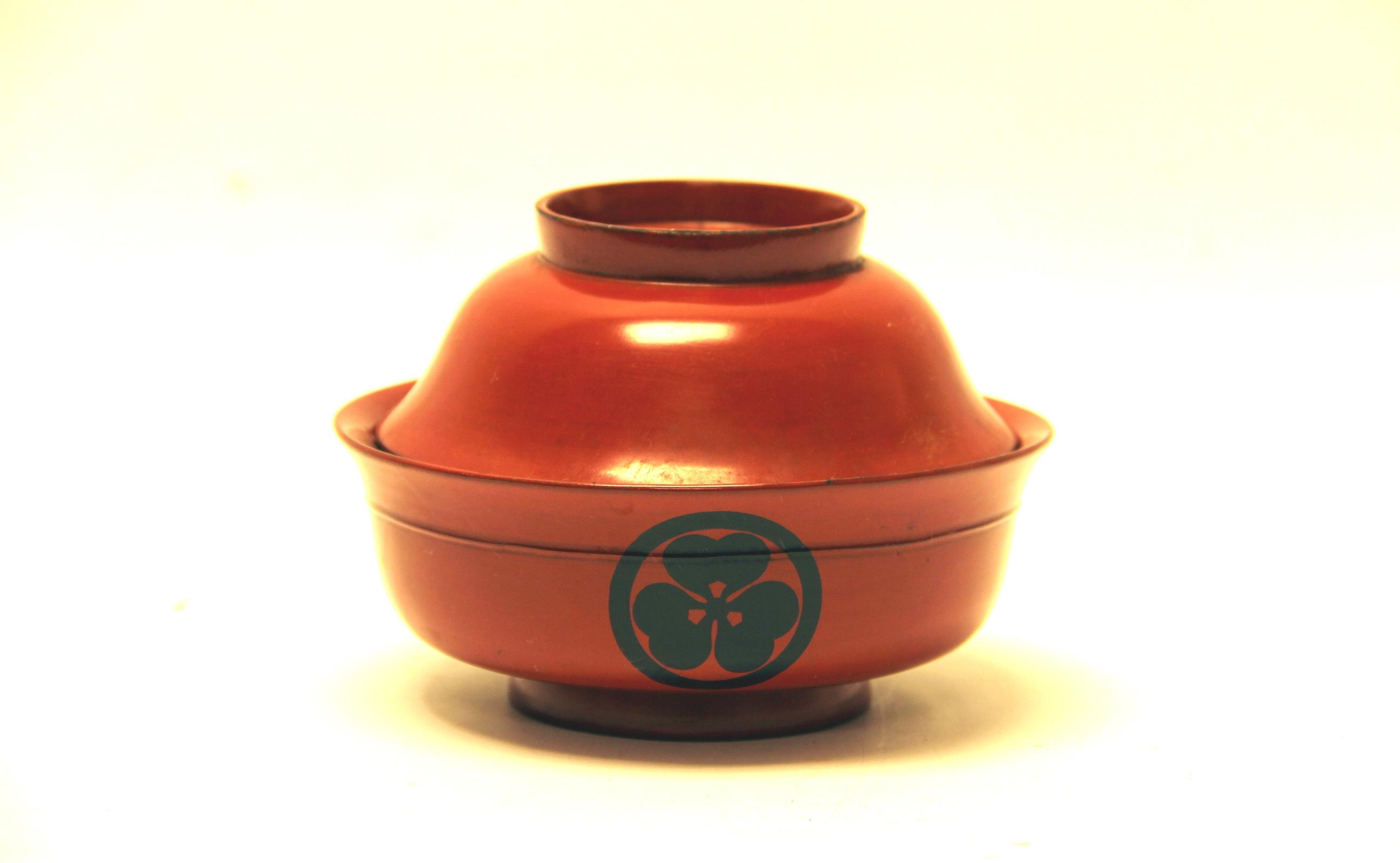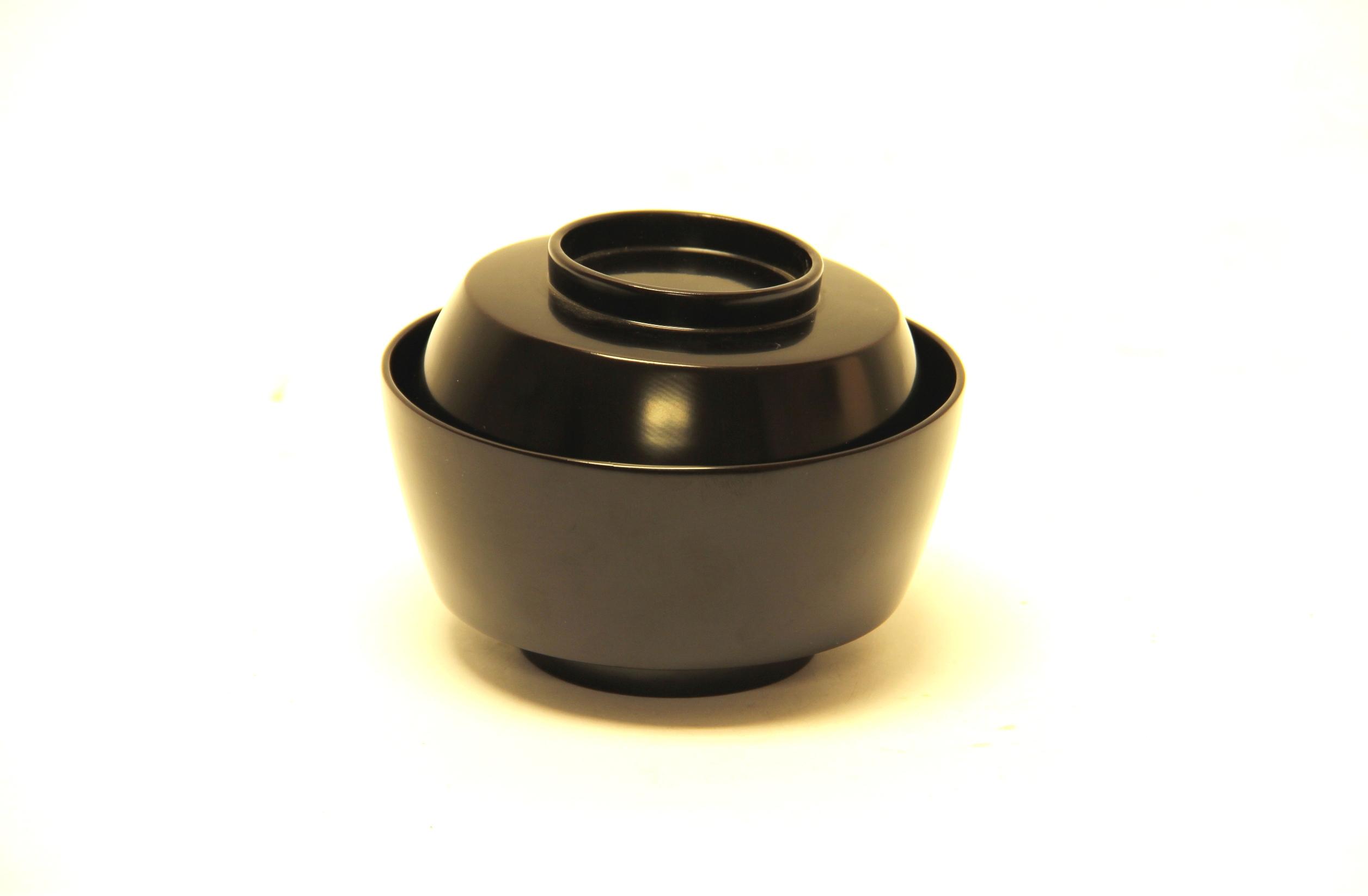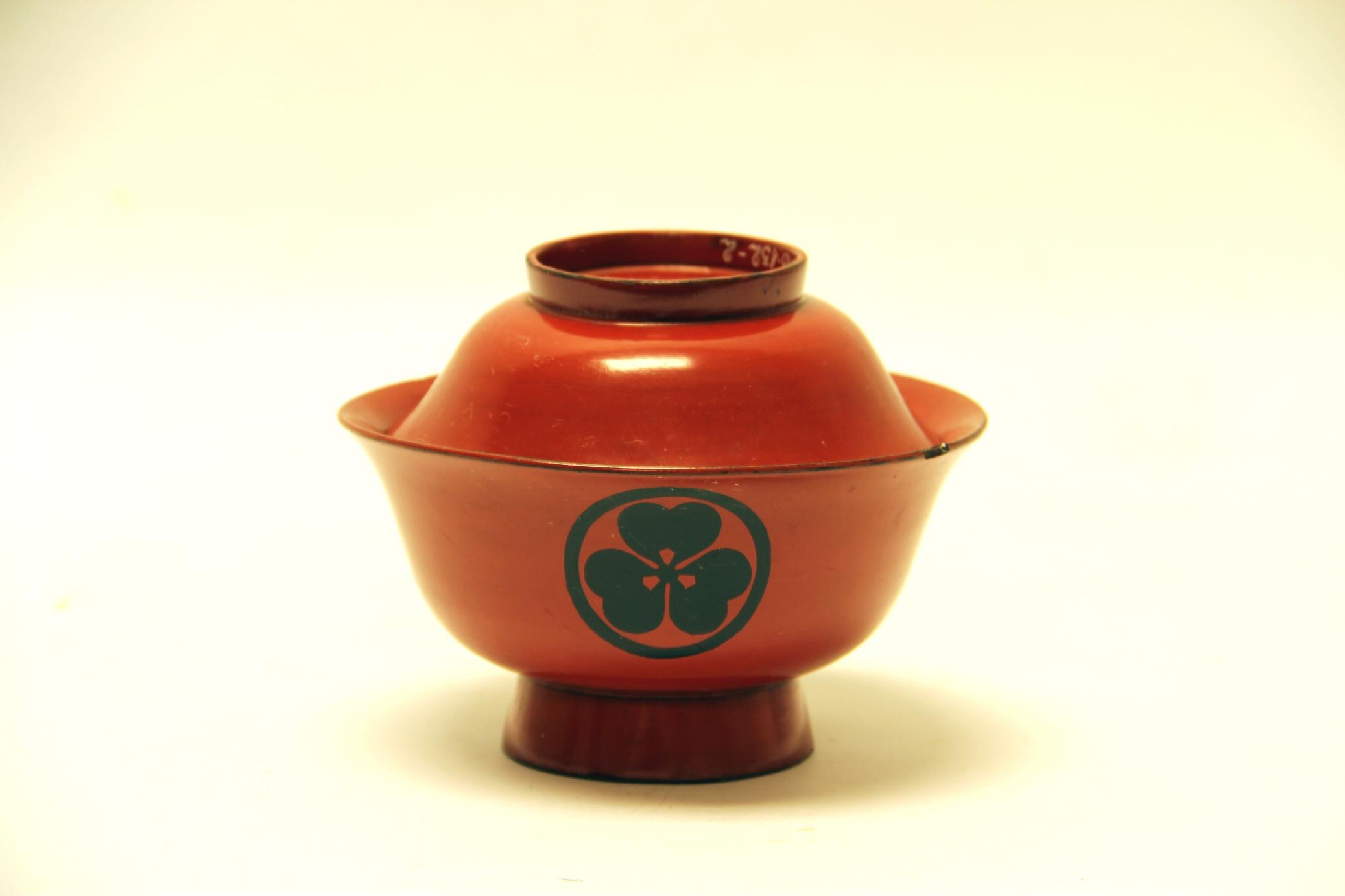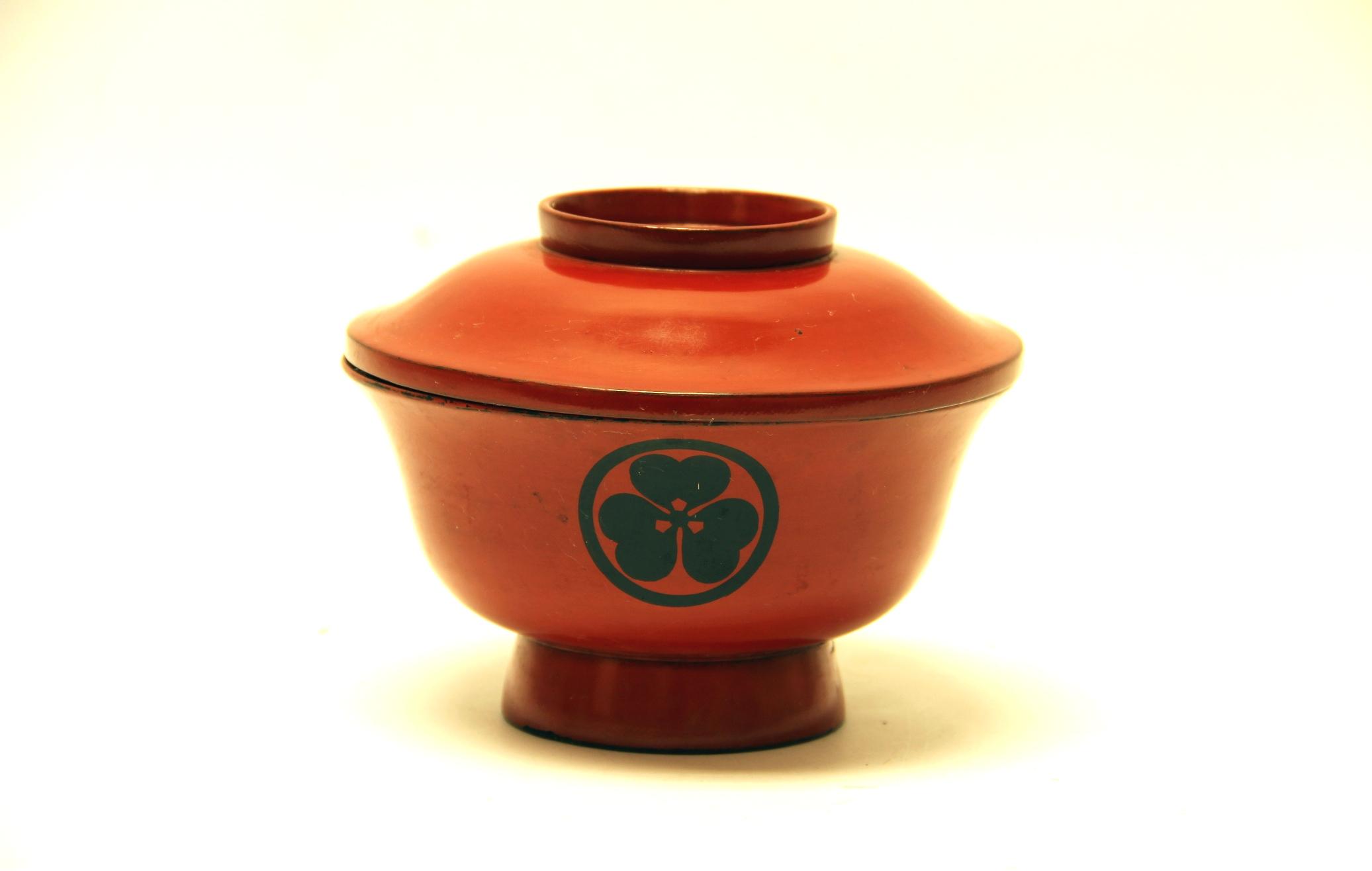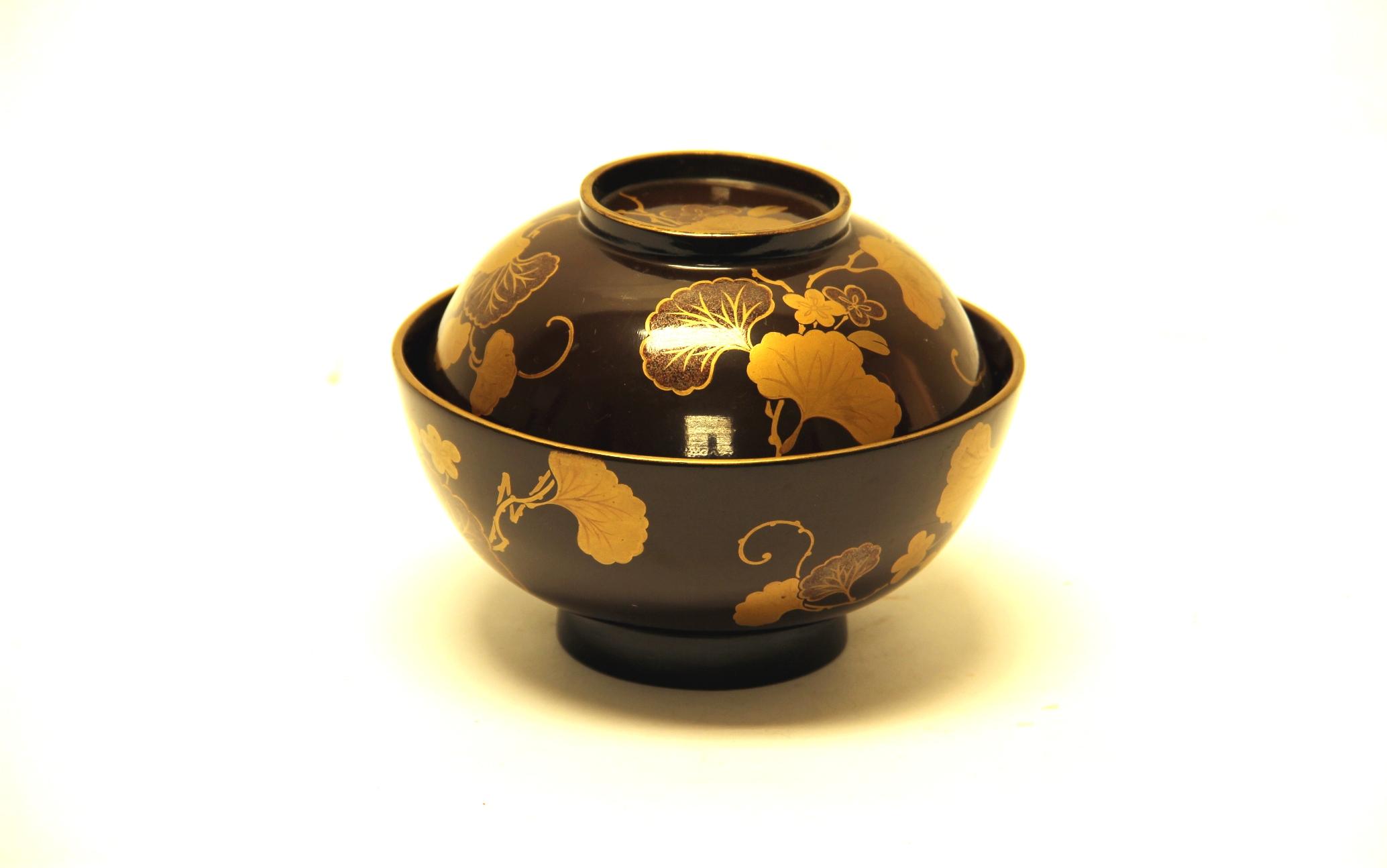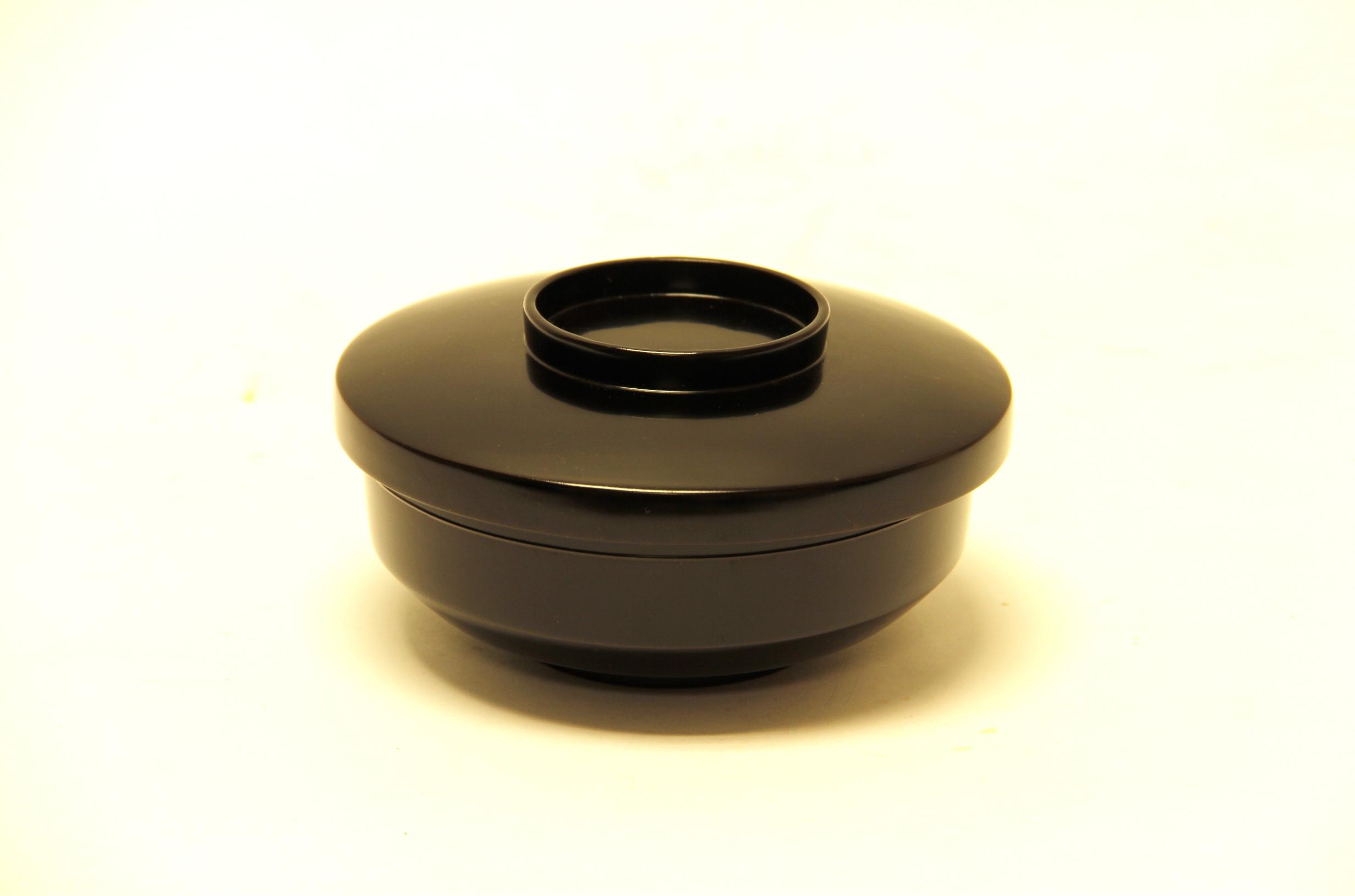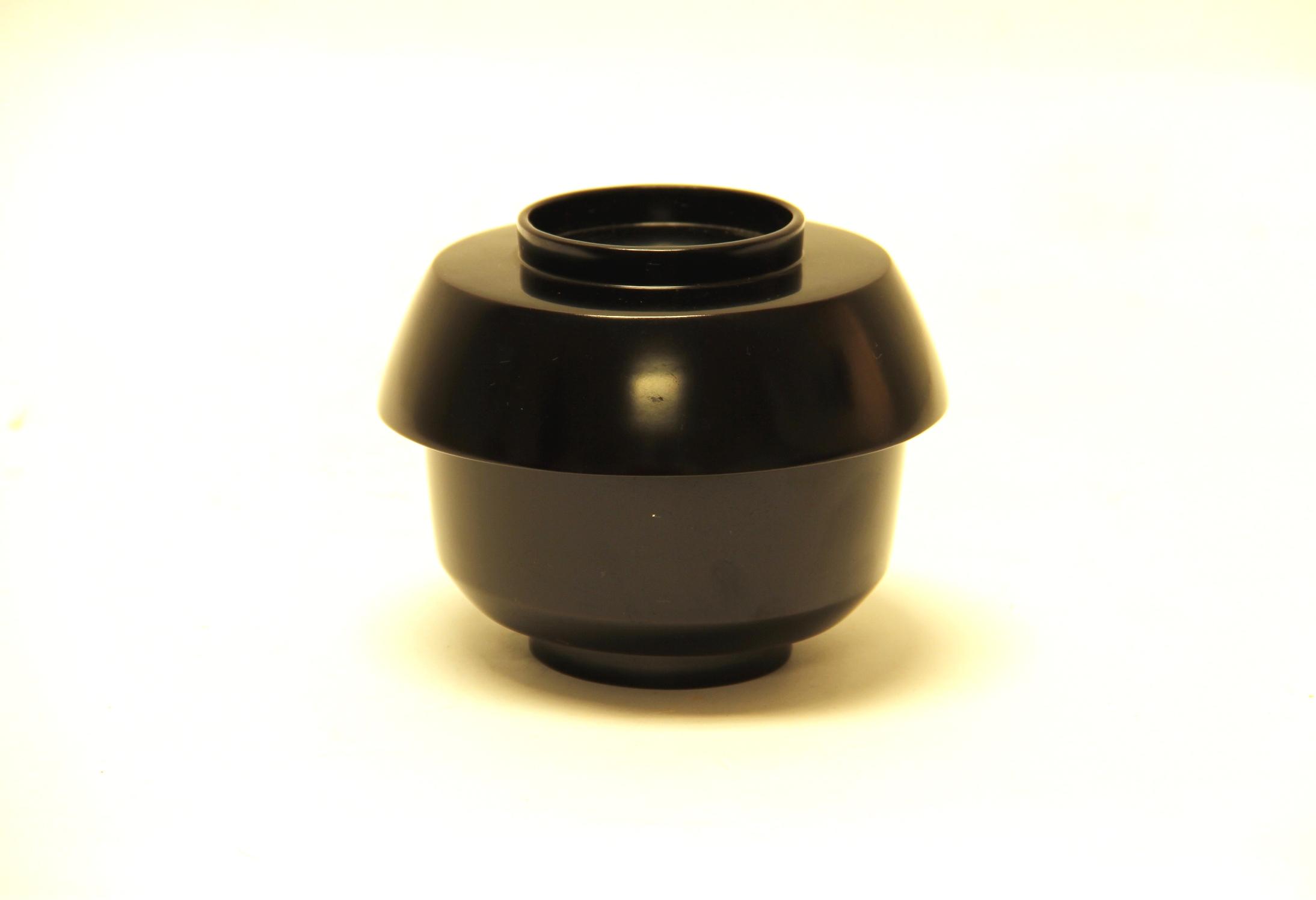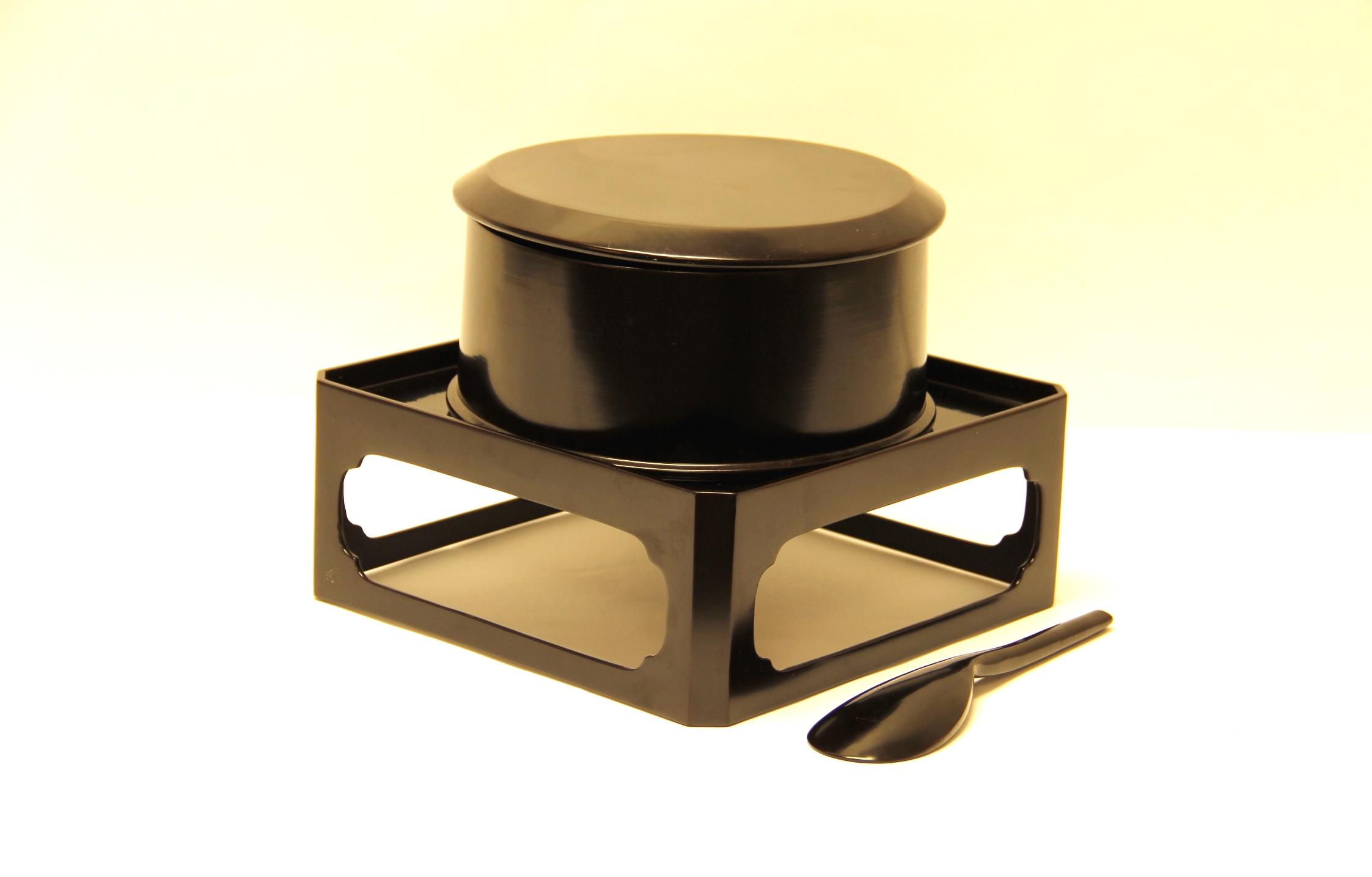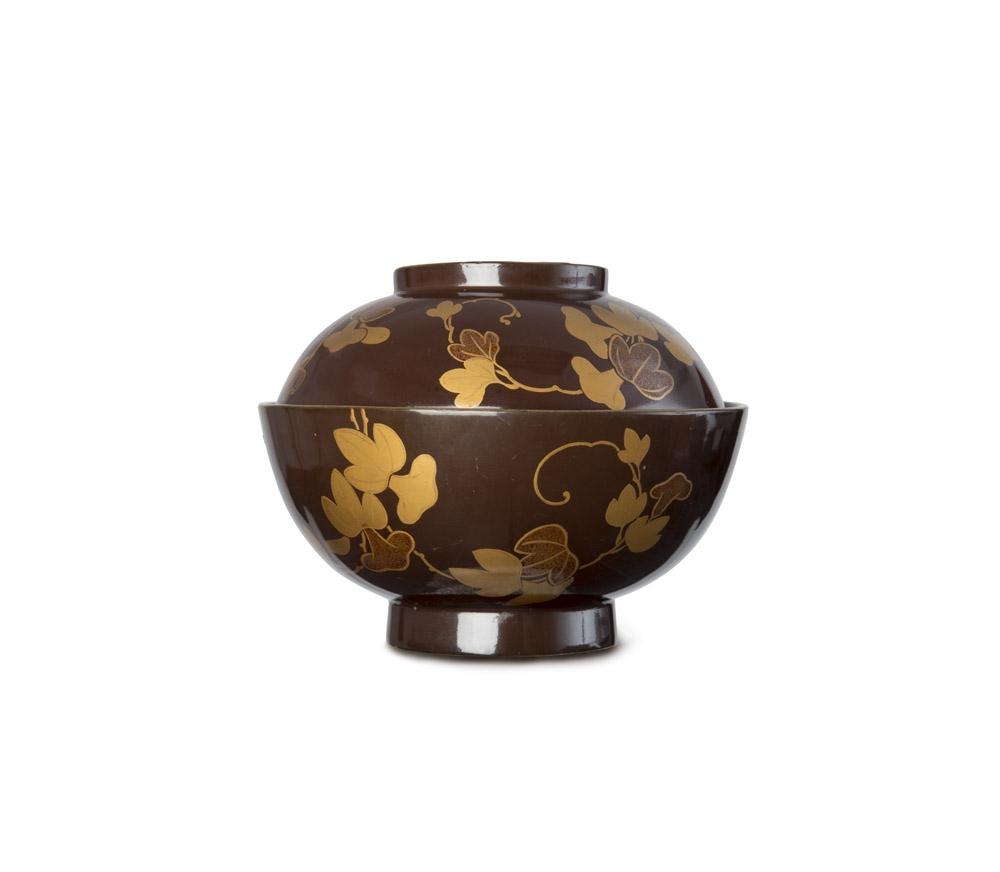

Lacquer has been used in Japan from the Jōmon period (2.500-1.000 BC). Lacquer is applied to seal the wood, bamboo, leather, paper, or ivory form and protect the object, then decoration is added. Some of traditional techniques include ikkanbari, application of lacquer layers to paper shaped in a mold; iro-urushi – adding pigments to clear lacquer and precious metals; shunkei-nuri – using clear lacquer to allow the natural appearance of the wood underneath. The most typical technique for designs is makie, sprinkling gold (silver or metalic) dust onto wet lacquer. Three major kinds of makie are flat makie, buffed makie, and embossed makie. At first lacquer was made to serve aristocrats, rich traders, and used in temples. From the Meiji period (1868-1912), lacquer was sponsored by the imperial family, thus ensuring its continuity today.
